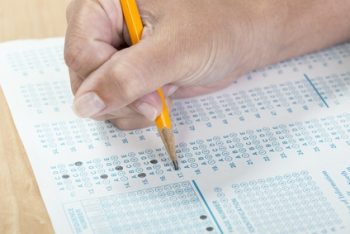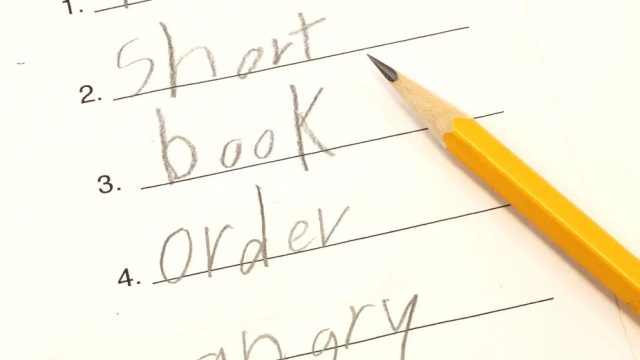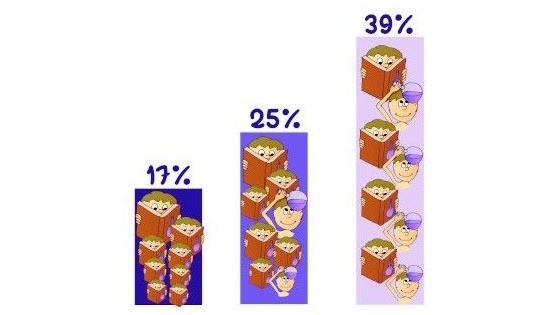Test Prep Strategies for Dyslexic Students

Making the academic leap from high school to higher education can be challenging for any student. For students with dyslexia, this transition can seem even more intimidating as it requires more time and preparation for them than it does for their peers.
Dyslexic students process and comprehend language differently, less intuitively, and less efficiently than students without dyslexia. Therefore, there is a specific purpose for any instructor working with a student with dyslexia: to teach the student learning strategies that help process and comprehend language as accurately and as efficiently as possible.
Find the right tutor and know your student’s specific needs
Finding the right tutor begins with understanding your child’s specific needs. Dyslexia is associated with a spectrum of language processing issues and those specific issues need to be identified as narrowly as possible. The student’s IEP (Individual Educational Program), 504 Plan, or reports from psychological educational testing may provide helpful information.
For example, many dyslexic students are easily confused by verbal explanations. They will not thrive in a lecture-driven format and cannot rely on auditory processing as their primary means of learning. For those students, the right tutor will provide learning through hands-on experience: observation, experimentation, and the use of methods and models that help the student visualize information and meaning.
In addition, dyslexic students can be eligible for testing accommodations, because they require extended time to demonstrate what they know. Their dyslexia is a functional limitation on their ability to perform up to potential under time duress. This presents a great opportunity for high-quality instruction and deep learning. Tutors can work with these students on building skills and strategies to help them more fully understand and engage test material within the additional time they are granted, rather than merely teaching “tips and tricks” to answer some of the content quickly.
Work with the tutor to learn how to process and re-process reading passages

The ACT and SAT are, first and foremost, intensive reading tests. Students with dyslexia are challenged by complex reading passages and grammar, making tests like the ACT and SAT important opportunities to support and teach them. A tutor can help by teaching specific learning strategies:
- Active reading: reading for main idea and author’s purpose by analyzing specific portions of expository essays
- Annotating: developing techniques to annotate different types of information and classify that information visually, e.g., underlining main idea sentences in introductions and conclusions and circling supporting details in the body paragraphs
- Summarizing the meaning of a passage or paragraph reductively in simple sentences or phrases written in their own words
Let’s flesh these strategies out a bit more.
Picture a reading passage on the ACT or SAT. It can span 500-850 words in length, including unfamiliar content, new vocabulary, and even scientific data. This presentation is daunting to anyone, but can seem overwhelming for someone who has difficulty navigating grade-level reading passages.
Students with dyslexia need to be coached through a process of transforming the unfamiliar into something more familiar, something they can process and make meaningful. They need to go through a multi-step process of deconstructing and then reconstructing the meaning of the passage. This work involves developing strategies to break down these more complex passages into simple sentences and approachable ideas.
Tutors can work with students to develop color coding and annotation systems to identify key information. Once broken down, active summarizing and paraphrasing help the student represent the information as meaningful and familiar, often rewriting the main idea and salient details into phrases and lists in their own words. In effect, the tutor helps students utilize a set of tools for processing information, tools that have transferable value for the student and can be applied in many academic settings beyond the test — critical reading work in English and Social Studies and across the sciences.
Form learning strategies to lifelong habits of academic success
Students with dyslexia may have to work harder than some of their peers, but that work is not without inspiring gain. Experienced tutors know the growth potential of dyslexic students and provide consistent, scaffolded instruction so they grow skills steadily and with purpose.
While many students who were always able to coast through school often plateau at certain points when the rigor of their course work intensifies, those students who learn and practice excellent techniques for comprehending material deeply can take on more and more complicated tasks with success. These students succeed because they were challenged at some point in their learning process and they compensated with excellent learning and study habits.
With the right instruction and learning strategies, there is no limit to the academic success dyslexic students can enjoy in school and as lifelong learners.










Tutoring works when… Kids use the time to plan their essays and plan what they will study. Tutors are very passionate… Regardless of formal qualifications, about $55 is standard industry wide for tutoring. Kids with dyslexia and autism thrive with tutoring because they get more attention. If parents were more proactive about helping their own kids, there would be less need for tutoring. When kids work with zero or one other student – big groups are less effective. For more help, you need to care a lot while choosing the best for your child.